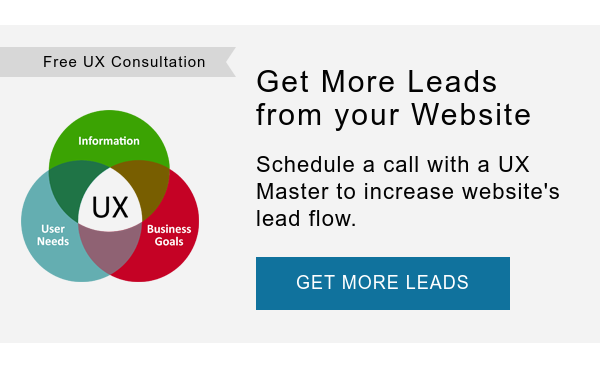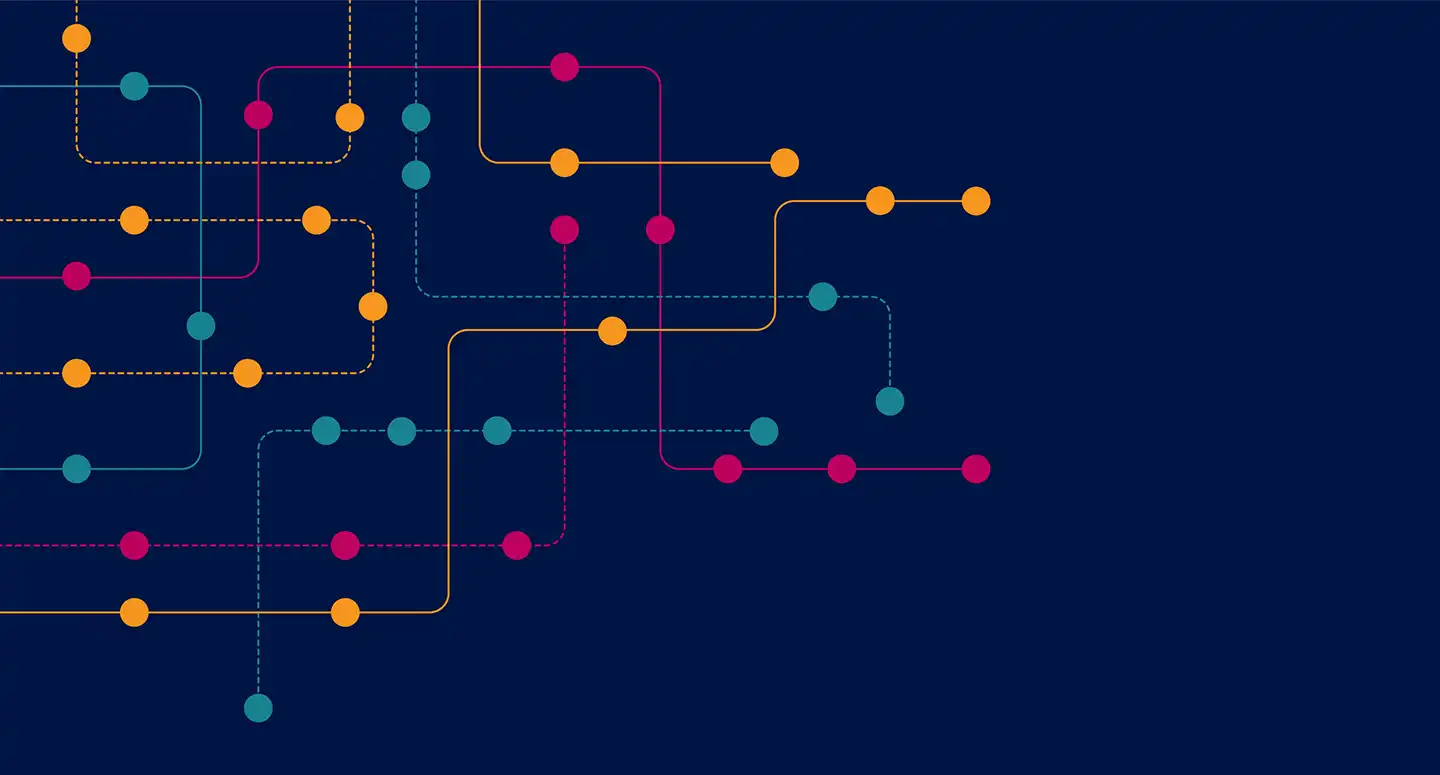How to Keep Users Focused & Improve Their Attention Span, Part 2
In our previous blog post, Best Ways to Generate and Hold User Attention Online, we learned about how information overload is eroding the attention span of the average person, along with some techniques we can use to overcome this and generate initial interest and attention in your messaging.
However, this is only half the battle marketers face. Once you have successfully captured the attention of your users, you need to understand how to hold on to it and prevent them from tuning you out. People have developed both conscious and subconscious mechanisms to literally filter out sensory input they deem of little value.
Here are four effective techniques you should incorporate into your messaging to prevent this from happening:
1. Combat Boredom Through Novelty
Novelty is a powerful concept that can be used to boost engagement rates online. Neuroscientists claim that novelty promotes information transfer because new, stimulating content triggers curiosity, and therefore captures peoples’ attention. People are inherently curious by nature; this is why we enjoy exploration and interactive experiences.
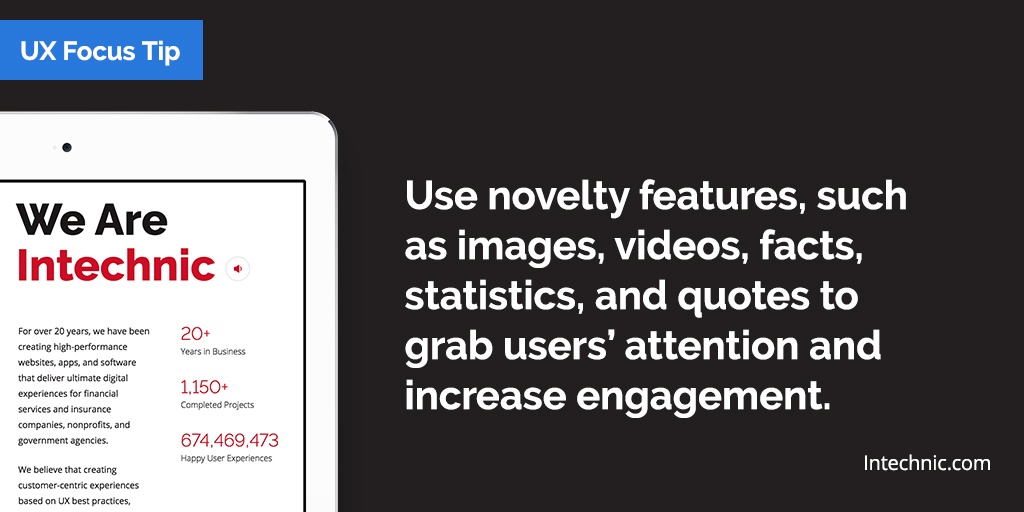
Can't use those as is, need to come up with our own examples from our projects, copy: Which Visual Grabs Your Attention Better?
You may be surprised to learn that taking advantage of this concept doesn’t even require a lot of fancy graphic design work. Even a simple visual makeover of your content can be enough to trigger this impulse in your audience.
Break up walls of text that will bore people quickly, insert images, videos, facts, statistics, quotes, and other novel elements to keep the experience fresh throughout, and your message can be significantly more appealing. We have used many of these techniques within this article, to provide you some good examples to look at.
One word of caution, however; be careful not to go overboard on novelty. Keep things interesting and try to engage the curiosity of your audience, but never at the expense of usability.
2. Provide Relevant, Contextual Information
One of the best ways to ensure your promotional messaging is relevant to your audience is by using contextual advertising.
Even better would be to include this information as hyperlinks within the text itself, where it fits directly into the narrative and story you are telling. Done properly, contextual advertising ensures three important things are achieved:
- Attention is Respected – Viewers will never feel like they have been manipulated or abused, leading to higher satisfaction and better overall user experience.
- All Ads Are Salient – When you do intrude on someone with a commercial message, at the very least you are ensuring it is relevant to the topic they are interested in at the moment.
- Avoid Triggering Filtration – Ultimately, this will help prevent people from applying filtering out your messaging.
The fact of the matter is that people are often smart enough to grasp when they are being manipulated. When people find their attention drawn to information they proceed to evaluate and then discard as useless or irrelevant, they notice, and begin to fight back through tuning out.
This is demonstrated by the counterproductive nature of certain banner ads. Movement and animation are extremely popular in banners, because of their efficacy in capturing the eye and attention of the viewer. However, if the information they present doesn’t pass the salience test for the viewer, more often than not banner blindness suddenly kicks in and the viewer makes an effort to filter out all future ads.
The key takeaway from this is that you should never ‘trick’ your users by manipulating them towards information that doesn’t pass their own personal salience test. If you do, they will notice, adjust their behavior, and begin filtering out your content. If you instead use these techniques to point them to relevant and useful information, they also notice, and respond with gratitude instead.
Direct users to relevant and useful information they actually want.
3. Be Mindful of Maximum Sustained Attention Span
Even under the best of circumstances, the average person finds it difficult to focus on any one item for too long. This of course varies somewhat depending on the medium of the content they are consuming, its’ particular media format, and their intent, but regardless of these differences most people simply can’t pay sustained attention for more than ten minutes or so. Here are a few of the most popular formats, and what you can expect from each of them:
Tutorials/In-Depth Information – 10 minutes
People can really only focus on something for the full ten minute span when they have made a conscious choice to invest in learning more about something. This is why Lynda.com keeps the majority of their tutorials under 10 minutes in length.
Articles/Casual Browsing – 5-7 minutes
For most forms of content, such as social media posts, average articles, or web pages, you have less time to work with – typically only 5 to 7 minutes. This is because as the users’ investment in the content drops, so does their willingness to pay sustained attention to it.
Commercial/Promotional Messaging – 60 seconds
For commercial videos or promotional messaging, you have even less time to work with – just 60 seconds or so. Explainer videos, product intros and the like should be kept short and sweet. You simply aren’t going to be able to achieve the level of deep engagement necessary to hold the attention span of the average user much past this.
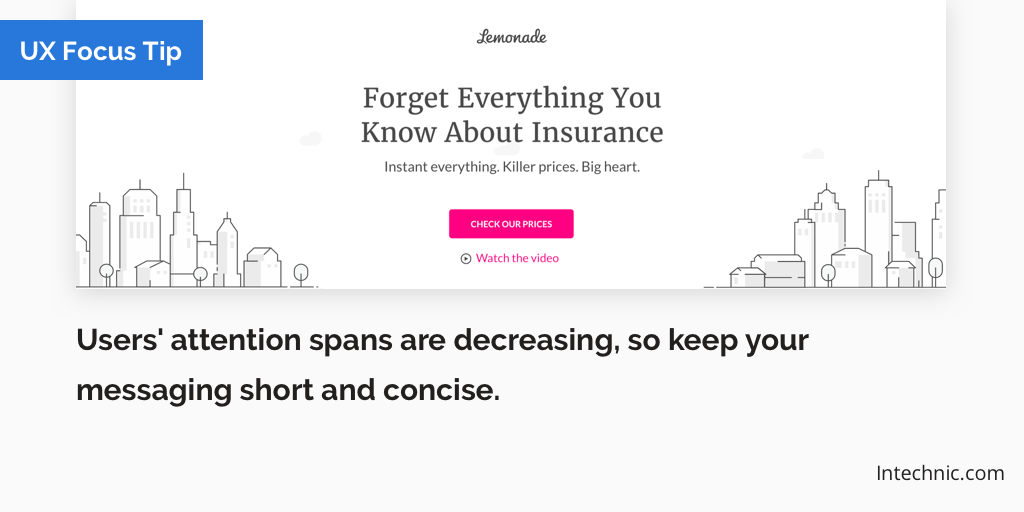
Finally, also be aware that average maximum attention span is also shrinking over time, along with the minimum. You may want to consider future-proofing some of your work in this regard, as there are no signs of this trend abating either.
4. Take Mental Models and Frequency Into Account
The final concept we will discuss is that of mental models, and how they impact attention span. Over time, as people interact with systems and messaging they grow used to it. After repeated interaction, they are able to construct a mental model of how that process works.
Eventually, this results in users tuning out important parts of that messaging, as it loses its power to hold their attention and has become familiar to them.
Critical information must be presented to people in a way that demands attention.
Think of a website you frequently visit that uses some sort of notification system – perhaps your bank or financial website. Usually these sites will place notifications in a specific area to the top or side of the screen. Do you still pay the same amount of attention to these notifications you did when you first started using the site? Or have you come to realize through familiarity that it’s just another notification telling you this month’s statement is ready, and tend to disregard them? If you’re like most people, it’s the latter.
The key takeaway from this is that truly critical information has to be presented to people in a way that breaks the mental model they have constructed. Be as ‘in your face’ as possible with it. Notifications that pop-up and cover the entire screen, requiring a button press to dismiss are one way this could be accomplished. Avoid presenting this type of information in areas or ways that will be easily dismissed or ignored by your audience.
5. People Don’t Tune Out Input They Value
As a final point, we would like to leave you with the words of Jerry Seinfeld:
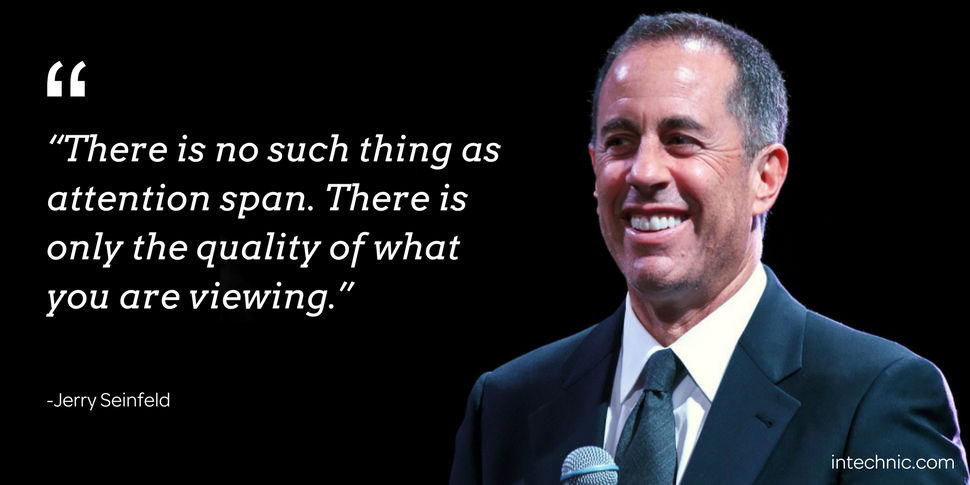
Jerry makes a truly important point here; ultimately, success in holding attention is defined by the quality of your content. If your content is interesting and valuable and provides a positive benefit to your audience, they will spend more time with it – relevancy is everything. If you can’t or don’t provide this, they won’t want to.
However, no matter how compelling and relevant your narrative, you may face difficulties in getting enough people to fully absorb it if you don’t fully understand how to generate that initial spark of attraction and interest in your messaging in the first place.


